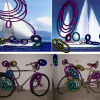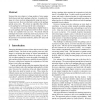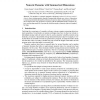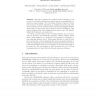40 search results - page 2 / 8 » From bounded to unbounded concurrency objects and back |
CVPR
2009
IEEE
14 years 12 months ago
2009
IEEE
Higher order spatial features, such as doublets or
triplets have been used to incorporate spatial information
into the bag-of-local-features model. Due to computational
limits, ...
PODC
1997
ACM
13 years 9 months ago
1997
ACM
Systems that store objects at a large number of sites require fault-tolerant and timely garbage collection. A popular technique is to trace each site independently using inter-sit...
TACAS
2004
Springer
13 years 10 months ago
2004
Springer
We introduce a systematic approach to designing summarizing abstract numeric domains from existing numeric domains. Summarizing domains use summary dimensions to represent potentia...
JACM
2002
13 years 4 months ago
2002
Abstract. Shared registers are basic objects used as communication mediums in asynchronous concurrent computation. A concurrent timestamp system is a higher typed communication obj...
VMCAI
2009
Springer
13 years 11 months ago
2009
Springer
This paper describes the methods used in Empire, a tool to detect concurrency-related bugs, namely atomic-set serializability violations in Java programs. The correctness criterion...




